


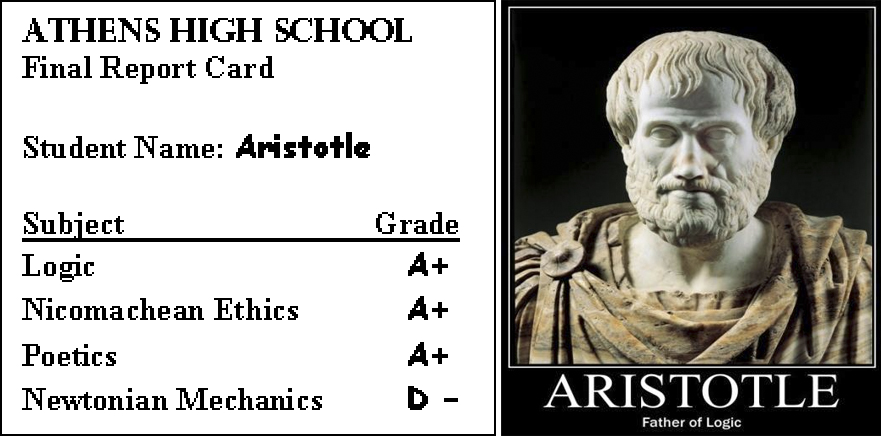
Newton’s laws are conceptually very dense. Each law is rich with concepts and cannot be mastered, or even vaguely understood, until each concept is carefully met and dealt with. As physics coaches, we can’t properly train our students until we give them the chance to unpack the laws and explore them in detail. This requires a considerable investment of time compared to my old three day whirlwind tour. Thinking back to those tie-wearing teaching days, at the time I did remark that my grade 12 students had difficulty with physics problems not because of the challenges of pulleys or frames of reference, but because they didn’t understand the “easy” stuff, the first law. I now understand that this wasn’t due to lack of effort on their part. (No one would accuse Aristotle of lack of effort). I simply had not provided them with the right opportunities in which to learn. Now I spend about four days helping the grade 11s build the first law alone.
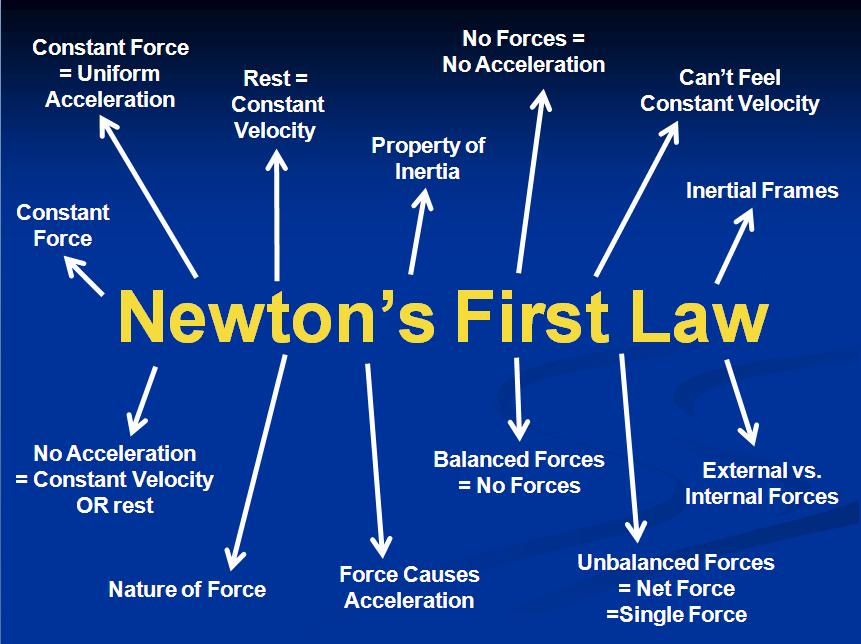
| Forces | Motion |
|---|---|
| No forces | rest or constant velocity |
| Balanced forces | rest or constant velocity |
| Single force | acceleration |
| Unbalanced forces | acceleration |
| Forces | Motion |
|---|---|
| No forces | comes to rest or at rest |
| Balanced forces | certainly at rest |
| Single force | steady motion |
| Unbalanced forces | maybe acceleration, maybe steady motion |
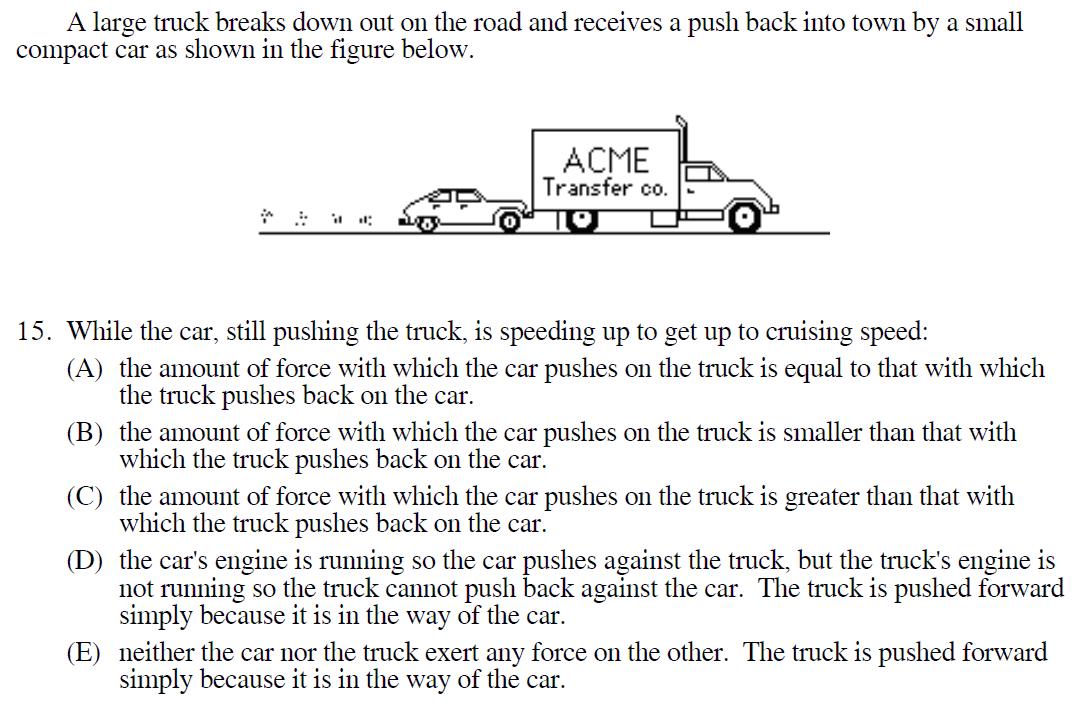
Guess what they answer? By the end of grade 12 after much careful intervention, only 74% of my students choose the correct answer to this question. (Which is?) Students have a very deeply held belief that the third law doesn’t apply to situations like this. In grade 11, before we develop the third law, I give my students four situations (illustrated using the Smart car and the tow truck, below) and naively ask them which forces exist (force of car on truck, truck on car) and how their sizes compare. Then they pool their results on the chalkboard. The pooled results from my class of 30 and two individual student results are shown below. 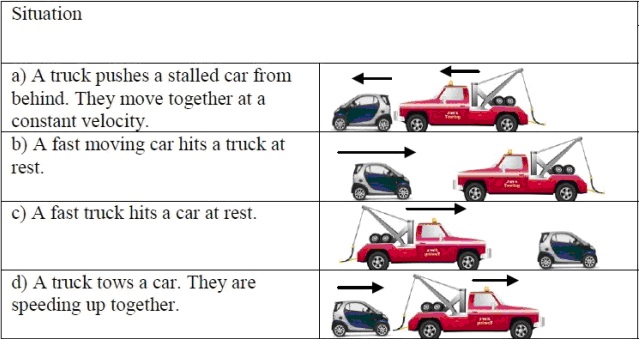
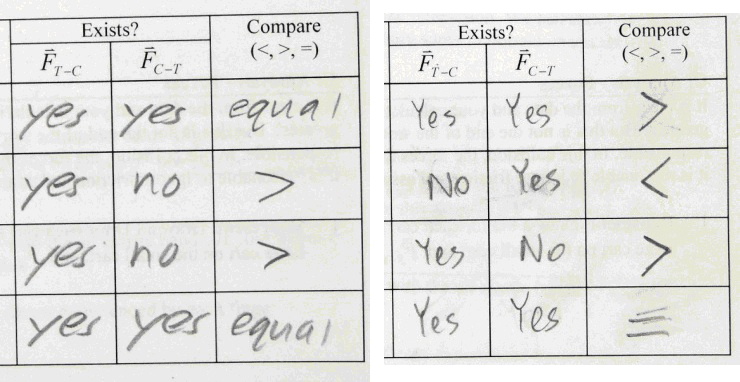
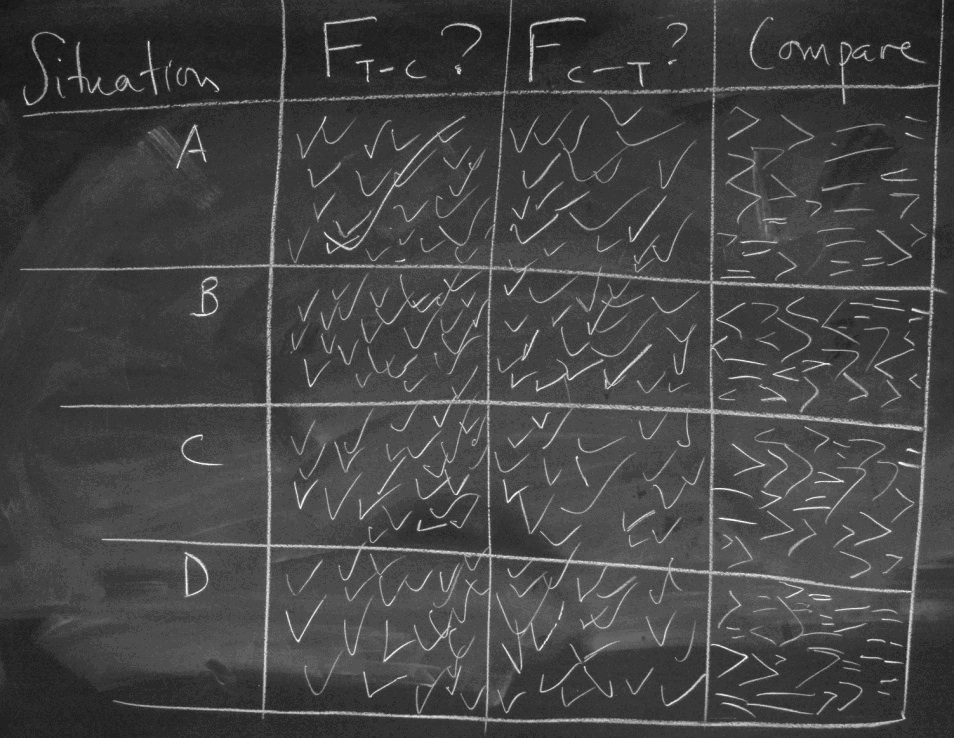
Notice how for situation C they very strongly favour the truck exerting the larger force. When applying Newton’s third law to situations, students are often led astray in the following ways. They think that: